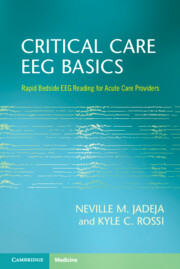Part II - Case-Based Approach to Specific Conditions
Published online by Cambridge University Press: 22 February 2024
- Type
- Chapter
- Information
- Critical Care EEG BasicsRapid Bedside EEG Reading for Acute Care Providers, pp. 123 - 210Publisher: Cambridge University PressPrint publication year: 2024

